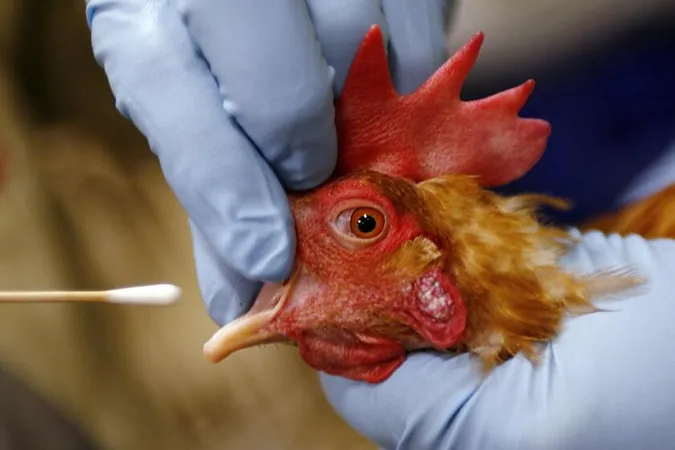
Shocking Discovery: Teen's H5N1 Bird Flu Infection Reveals Disturbing Mutations!
2025-01-01
Author: Chun
Introduction
In a troubling report that has captured the attention of health officials worldwide, a 13-year-old Canadian girl infected with the H5N1 bird flu in early November has made a remarkable recovery following a severe health crisis. However, the nature of her infection revealed alarming genetic mutations in the virus that could enhance its ability to target human cells and potentially lead to more serious illness in the future.
Case Analysis
The case was detailed in a recent edition of the prestigious New England Journal of Medicine, which analyzed various H5N1 cases across North America. While she has now returned to health, the medical community is keeping a close watch on the implications of this incident. Researchers highlighted genetic variations in the virus, dubbed D1.1, suggesting it has the potential to replicate more effectively in humans—a disturbing reality given that a total of 66 human cases of H5N1 have already been reported in the U.S. in 2024 alone.
Initial Symptoms and Hospitalization
The teenager initially sought help at an emergency room on November 4, presenting with conjunctivitis and fever. Despite a history of asthma and obesity, she was discharged without treatment. However, her condition deteriorated rapidly, leading to a return to the hospital just days later, where she faced severe respiratory distress and other critical health issues.
Diagnostic Testing and Recovery
Upon admission, doctors tested her for seasonal flu strains but found high viral loads of influenza A and H5N1. This prompted a subsequent test that confirmed the presence of the bird flu. Despite her declining health, which necessitated intubation and advanced life support measures, her condition improved significantly, and by November 16, she had tested negative for the virus that had threatened her life.
Genetic Sequencing Findings
Genetic sequencing of the virus revealed that it was closely linked to strains found in wild birds, but its concerning mutations—similar to those seen in another Louisiana patient who suffered severe symptoms—prompted further inquiry. These mutations were not present in the general environment, raising fears that the virus can evolve within hosts, manifesting greater severity of illness.
Expert Opinions and Public Health Implications
Experts are sounding the alarm. Jennifer Nuzzo, director of the Pandemic Center at Brown University, stated, "It is worrisome because it indicates that the virus can change in a person and possibly cause a greater severity of symptoms than initial infection." This evolving picture underscores the need for heightened vigilance and preparedness against possible future outbreaks.
Conclusion
As health officials monitor these developments, experts urge the public to stay informed and cautious. With the current trajectory of human infections and the potential for more severe manifestations, understanding the implications of the H5N1 mutations will be vital in managing public health. In a world where viruses are constantly evolving, the time to act is now—after all, this isn’t just another flu virus; it’s a reminder of nature's unpredictable power!





 Brasil (PT)
Brasil (PT)
 Canada (EN)
Canada (EN)
 Chile (ES)
Chile (ES)
 Česko (CS)
Česko (CS)
 대한민국 (KO)
대한민국 (KO)
 España (ES)
España (ES)
 France (FR)
France (FR)
 Hong Kong (EN)
Hong Kong (EN)
 Italia (IT)
Italia (IT)
 日本 (JA)
日本 (JA)
 Magyarország (HU)
Magyarország (HU)
 Norge (NO)
Norge (NO)
 Polska (PL)
Polska (PL)
 Schweiz (DE)
Schweiz (DE)
 Singapore (EN)
Singapore (EN)
 Sverige (SV)
Sverige (SV)
 Suomi (FI)
Suomi (FI)
 Türkiye (TR)
Türkiye (TR)
 الإمارات العربية المتحدة (AR)
الإمارات العربية المتحدة (AR)